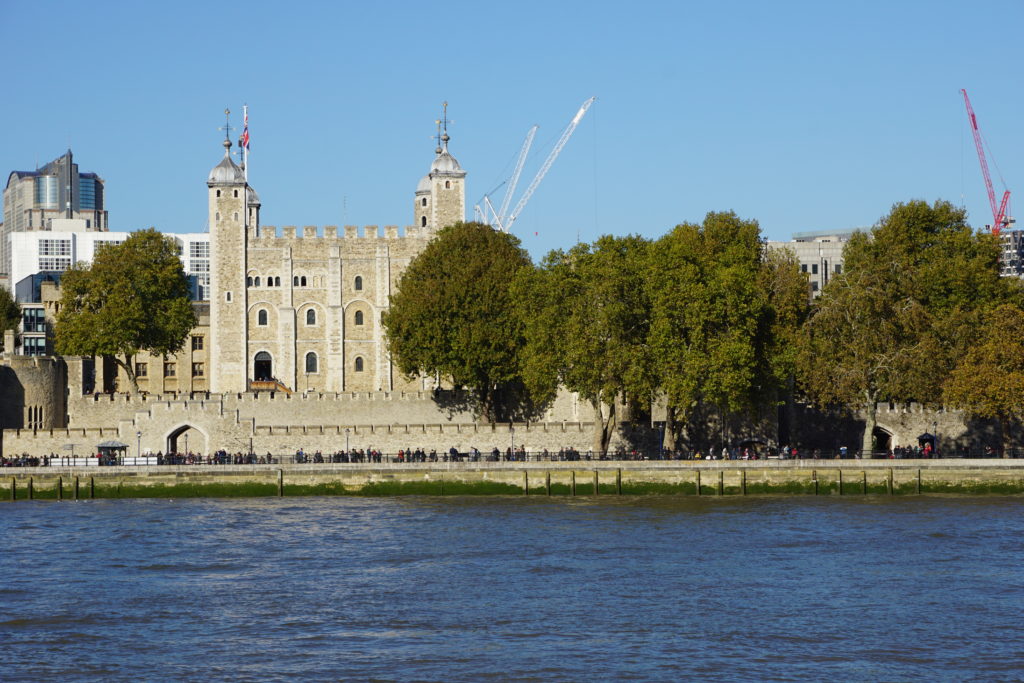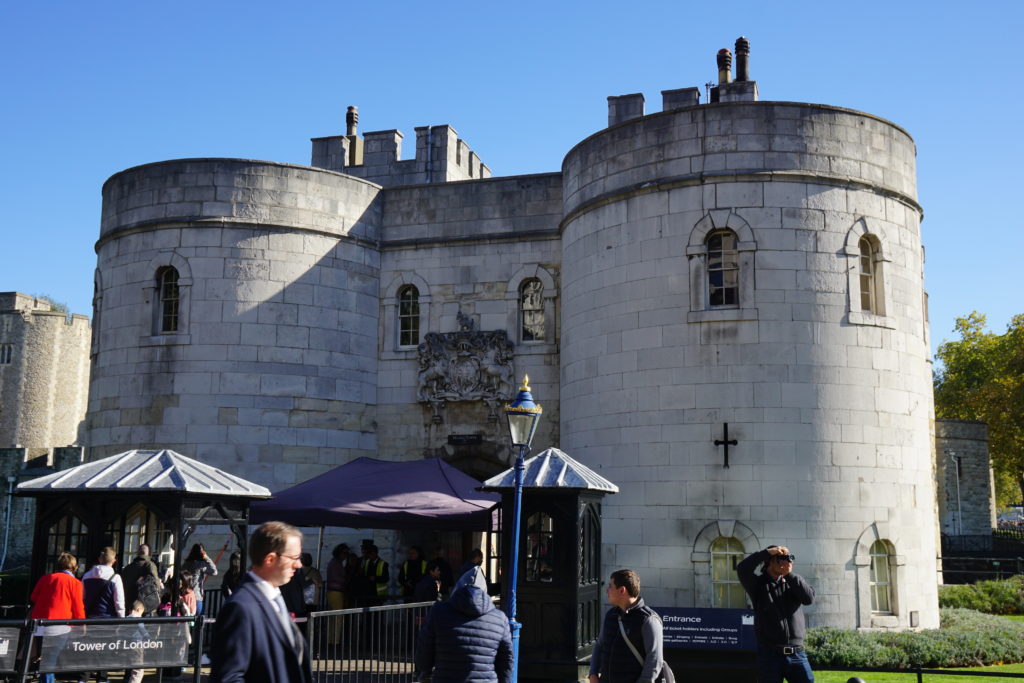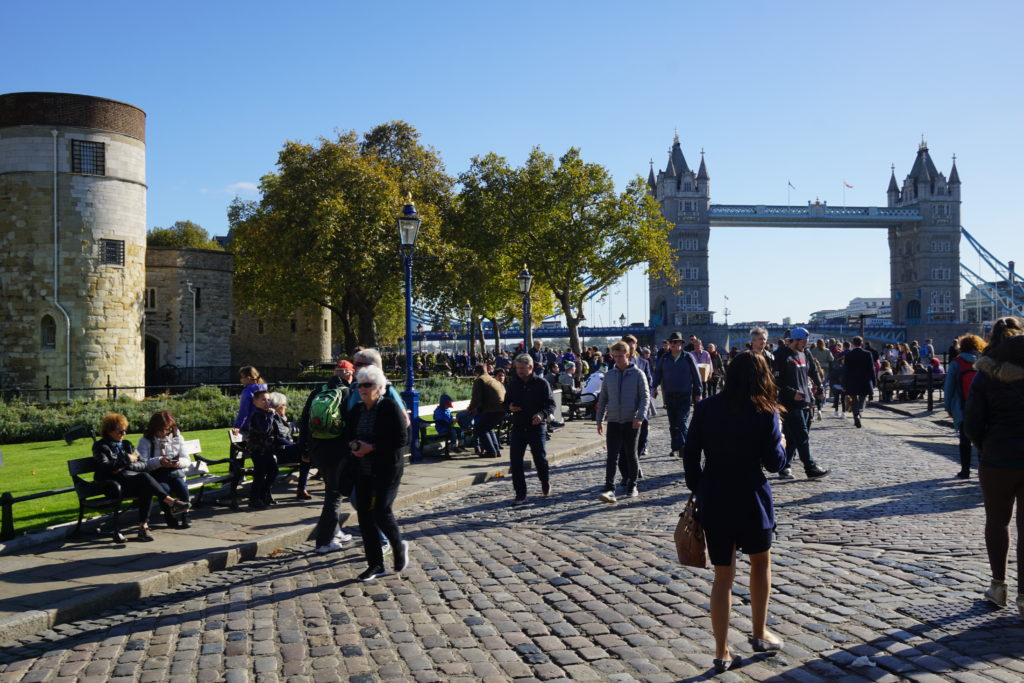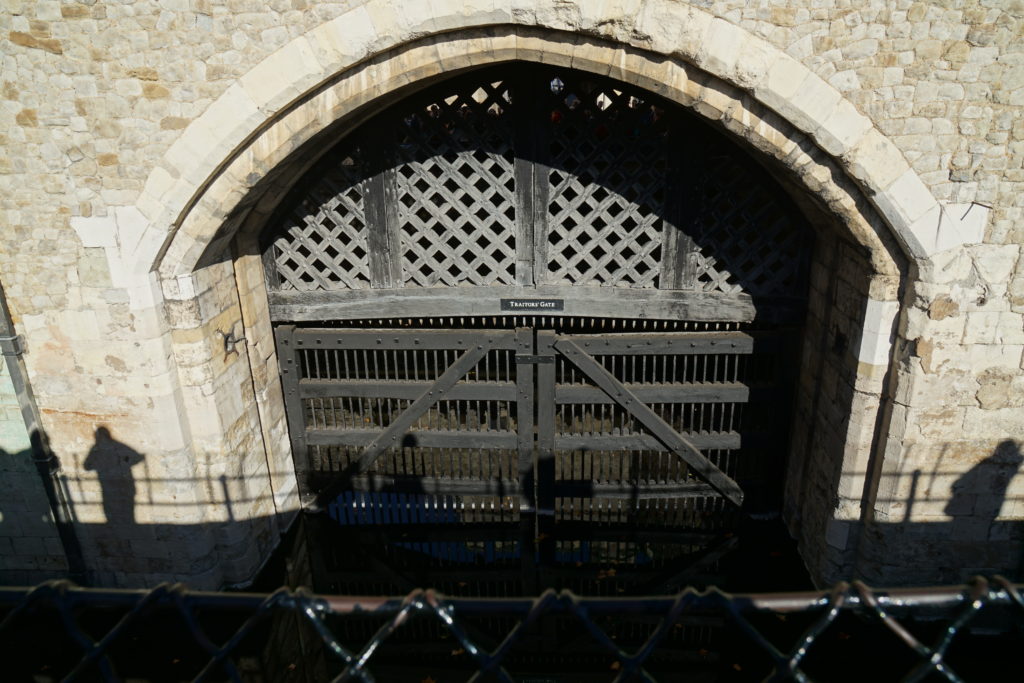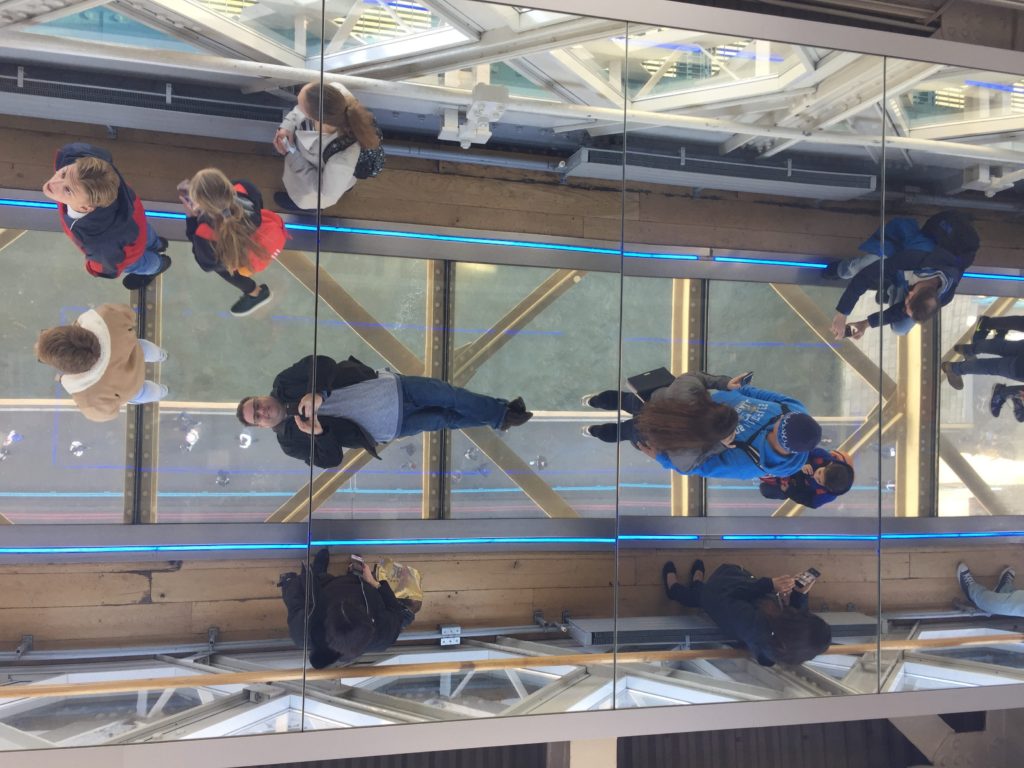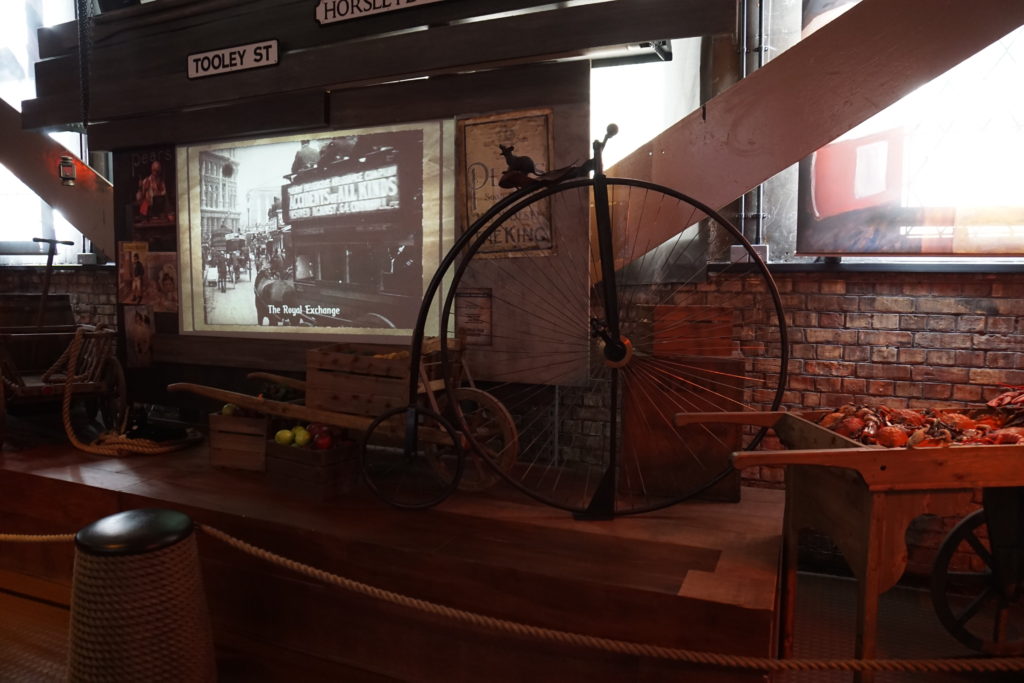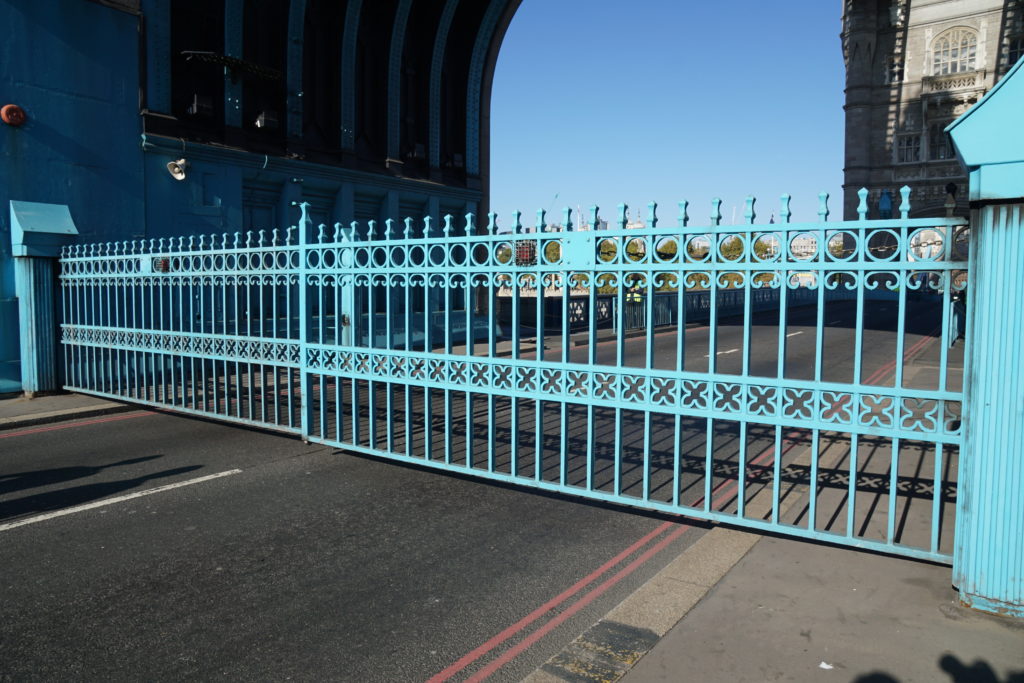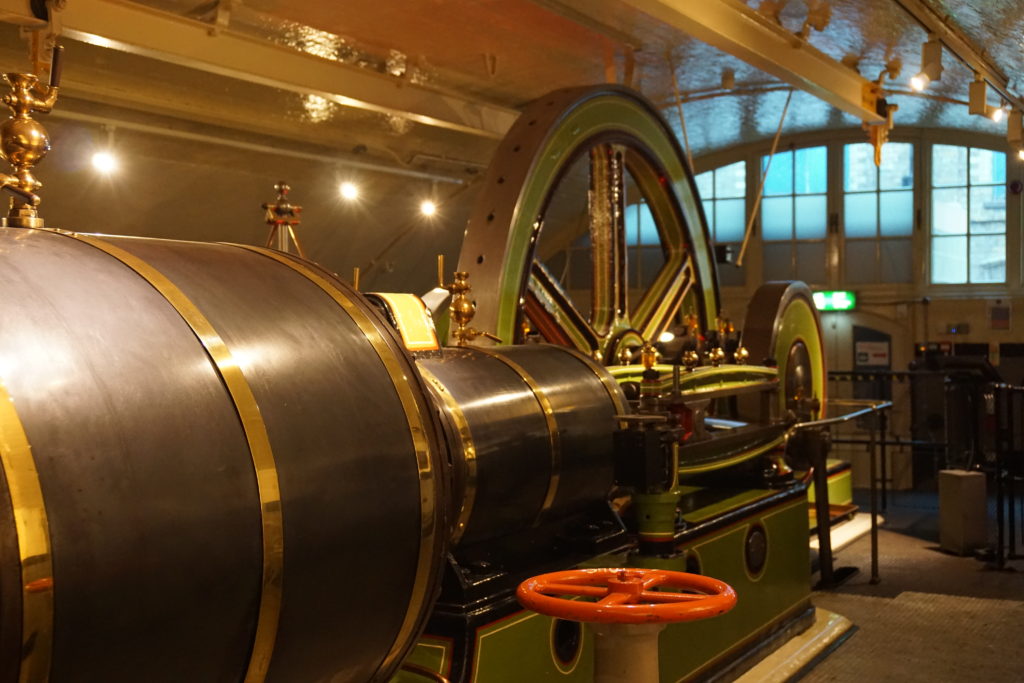On our second day in London we set out to see the big pretty bridge that’s always on TV. You know which one I’m talking about—Tower Bridge! For the sake of clarity, this is NOT London Bridge. They are two different bridges, separated by a half-mile of the River Thames. Incidentally, our adventure to Tower Bridge began with a trip over London Bridge.
If you have already read about our walk across London Bridge, welcome back. If you have not, click here to read about it’s fascinating history. Initially, we had no intention of visiting London Bridge. We would see it from Tower Bridge, and that was enough for me. I knew London Bridge was historic, which is to say, I knew it had it’s own nursery rhyme. Otherwise, it’s fairly ordinary—an unrecognizable landmark to unsuspecting tourists.
We ended up at London Bridge because that was the tube stop for Tower Bridge. Had we not been dropped off at the bridge’s base, we never would have walked over it. I simply would have spotted it from Tower Bridge and made it the background for a selfie with my fair lady. Fortunately we did walk over it. Not because it’s amazing, but for it’s history. There has been a “London Bridge” at it’s location since the Roman occupation nearly two thousand years ago. The city of London developed as a result of the activity generated by an earlier version of the bridge. The bridge may be ordinary, but I was happy to stroll over the span that bore so much history.
TOWER OF LONDON
Just down the river was our next destination, Tower Bridge. We chose to walk on the north side—the sunny side—which led us to the Tower of London. Nearly a thousand years old, this imposing castle is one of London’s most popular attractions. Known for a dark history of torture and death, these days it is the place that houses the Crown Jewels and Yoeman Warders (Beefeaters).
- Built by William the Conqueror as part of the Norman Conquest of England in 1066
- London Tower is a complex of several buildings set within two walls and a moat, which is now gone. Only a ditch remains. I guess it’s important for the Yoeman Warders to be on point as to prevent the castle from being sacked.
- It served as the Royal Palace until the 17th century.
- Was used as a prison for a brief 850 years from 1100 to 1952.
- It is supposedly haunted, but I didn’t see any ghosts—unless ‘ghost’ is British slang for tourist.
- There are a minimum of six ravens kept at the Tower of London. Superstition has it if they leave the Kingdom will fall.
Traitors’ Gate is a water gate entrance to the Tower of London, built by Edward I between 1275-1279. It was simply built so that King Edward could arrive at the tower by boat from the Thames. As time went on, the castle was increasingly used as a prison for enemies of the state accused of treason. Prisoners were brought in on a barge, passing beneath London Bridge (which showcased the heads of traitors on spikes) and would enter the castle via the gate: hence the name—Traitors’ Gate. You did not want to find yourself entering through this gate. It was like hearing Jules quote Ezekiel 25:17. It meant your ass!
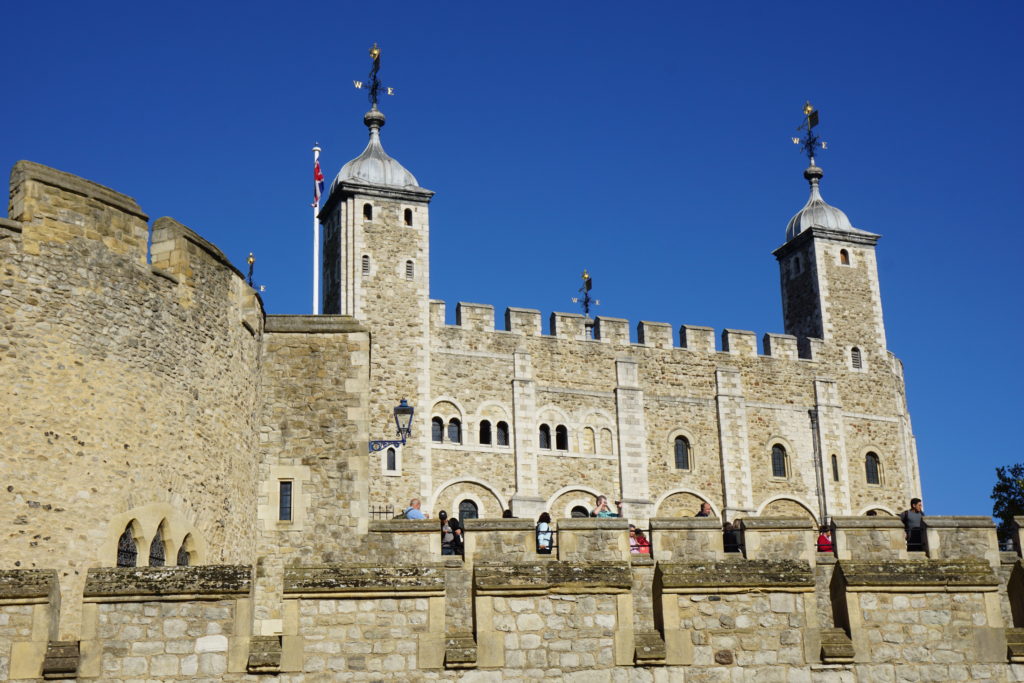
Unfortunately we never did make it inside, a decision I most certainly regret. The crowds were too heavy, so we skipped it for the meantime and made our way over to Tower Bridge.
TOWER BRIDGE
Tower Bridge is located right beside the Tower of London. Our intention was to walk the bridge with hopes of returning to the Tower of London for a tour. It wasn’t to be. We ended up touring the bridge instead, finishing on the other side of the river.
I had been on the bridge several years back but never made it inside. I had to go in this time! After a short wait, we were in. An elevator took us to the top of the bridge tower where we watched a short film about the bridge and it’s construction (constructed between 1886-1894). Following the film we made our way across the upper crosswalk that connected the two towers. The highlight of the visit was the glass floor providing a view to the river and roadway below. Definitely some hesitation before that first step.
One of the crosswalks had a mirror on the ceiling which created the perfect ‘selfie’ opportunity. It was actually pretty cool. Nothing quite like seeing an overhead shot of yourself standing over Tower Bridge and the Thames.
We made our way out through the South Tower. Timing was perfect—we literally finished the tour just as the bridge was about to open. The bridge only opens a few times a day, and the times are scheduled. To be there at the right time was sheer luck.
I’m usually frustrated when a bridge goes up. Living at the shore it’s a common occurrence and usually means I’m going to be late for something. We’ve all seen millions of pictures of Tower Bridge, but . . . how many have you seen with the bridge open? Probably very few, if any at all. On this day I was not frustrated by the opening of the bridge. In fact, it was quite a treat to watch the opening of one of the most famous drawbridges in the world
After watching the bridge open and close, we made our way to the south side of the bridge, towards the engine room. Here were the original steam engines that were used to open the bridge until 1976. The equipment in the room was reminiscent of locomotive steam engines; you would never think they opened a bridge.
NEXT STOP: FOOD
As I mentioned earlier, our intention was to make it back to the Tower of London for a tour. Following our extensive tour of the bridge and the engine room, we found ourselves on the other side of the river . . . hungry. It was only our first day exploring London; we would be there all week. I figured we’d make it back, but we never did. Regardless, we had a pretty good day and it still wasn’t over. We were off to Leadenhall to grab some food and have a pint in a pub that was established in 1780.

